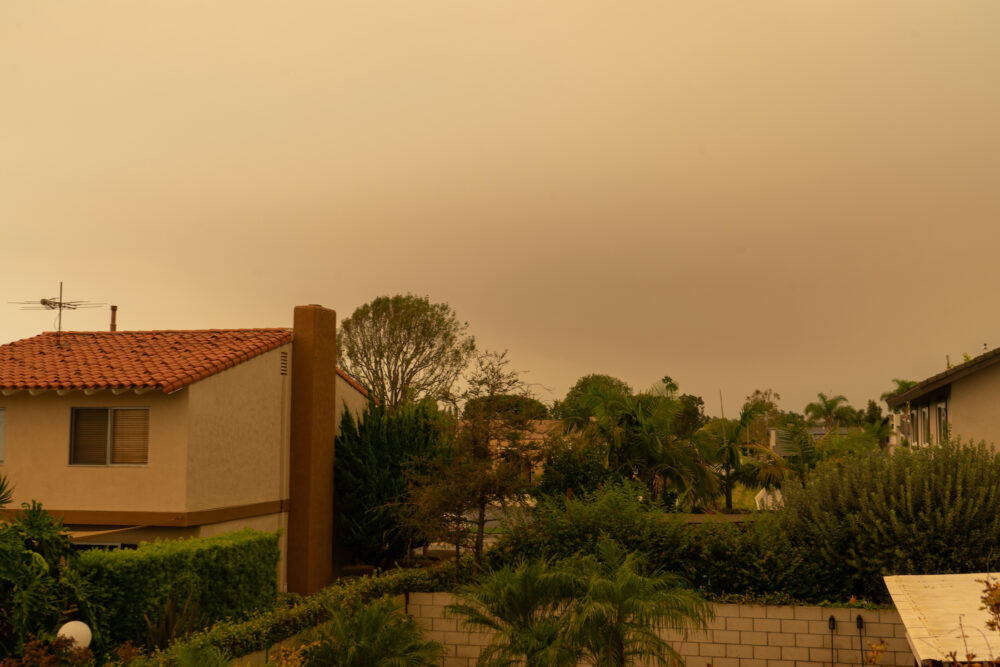
By Ansharah Asif
An estimated 19,000 firefighters have been fighting wildfires raging across California, which have resulted in at least 24 deaths and the destruction of over 3 million acres of land statewide.
“These are intense, huge blazes,” environmentalist Tom Steyer said. “This is a huge, immediate, urgent problem.”
How and where did the wildfires start?
The West Coast fires started as a result of excessive weather conditions, according to Daniel Swain, a climate scientist at the Univesity of Californis, Los Angeles.
Death Valley experienced blackouts for the first time in 20 years as temperatures peaked as high as 130 degrees Fahrenheit. A lightning storm caused by a Pacific Ocean tropical storm resulted in many small-scale fires in the Bay area and northern California. Heavy, dry winds blew the fires in many directions causing small-scale fires to become huge flames. In addition, a now viral gender reveal party was found to have caused the El Dorado fire, which alone consumed 10,000 of the 3.2 million acres of California land destroyed by the wildfires.
Climate change appears to be a major factor in the development of these wildfires. Intense warm and dry weather conditions make it easier for fires to spread, such as by making wood more receptive to ignition while heavy winds carry the flames and supply them with enough oxygen to reignite.
“Climate change has always been one of my biggest worries,” Spanish teacher Alison Gomez said. “I believe climate change to be one of today’s biggest and worst problems. In my opinion, climate change has a big hand in the spread of the wildfires.”
How have the fires affected the atmosphere and air quality?
Due to the release of huge amounts of smoke particles and chemicals such as carbon monoxide, nitrogen dioxide and formaldehyde, the sky has taken on an ashy color. Heavy amounts of clouds and smoke cover the sun; many have shared pictures of a bright red sun hiding behind thick gray clouds.
According to climate specialist Jeff Berardelli, when light passes through an unpolluted atmosphere, “all the colors which make up the spectrum are detected by your eye as ‘white light.'” However, when light passes through a “greater amount” or polluted atmosphere, the light scatters and appears as a darker shade.
NASA claims that the orange sun is a result of only red and orange wavelengths traveling down through the atmosphere while all other wavelengths are blocked by smoke particles. Officials encourage people to stay inside as much as possible and to wear masks when outside to prevent inhaling chemicals released by the smoke and other pollutants such as small sand particles.
Many people of all ages cross California have experienced changes resulting from the fires.
“Families with children are having trouble,” senior Josyanne Guirguis said. “And with the COVID-19 pandemic, children and teens are doing online school. Families are having trouble educating their children at home since they are forced to evacuate while many of the homeless and starving are trying to find safe places to stay temporarily.”
Two major fires erupted over the weekend in Napa and Sonoma counties. These fires destroyed about 42,560 acres and around 80 buildings, including homes and wineries. An estimated 5,000 residents were ordered to evacuate for their safety from a city 55 miles north of San Francisco. The Zogg Fire, the name given to the fire which erupted in Shasta County, burned at least 50,102 acres and killed at least three people. Governor Gavin Newsom ordered a state of emergency Monday night in the three counties.
According to the National Fire Interagency Center, at least 22 active fires have been reported and are traced back to high temperatures, strong winds and lack of moisture. As the Glass Fire rages on, more than 70,000 people were ordered to evacuate for their safety. Many were afraid that once they left, they would not be able to come home because their houses were consumed by the fire.
Evacuee Morgan Balaei saw chunks of ash land and crash down on her windows. “One chunk was so large it looked like someone’s toupee,” she recounted.
For more information on the factors and history of wildfires, visit the Center for Climate and Energy Solutions website.





